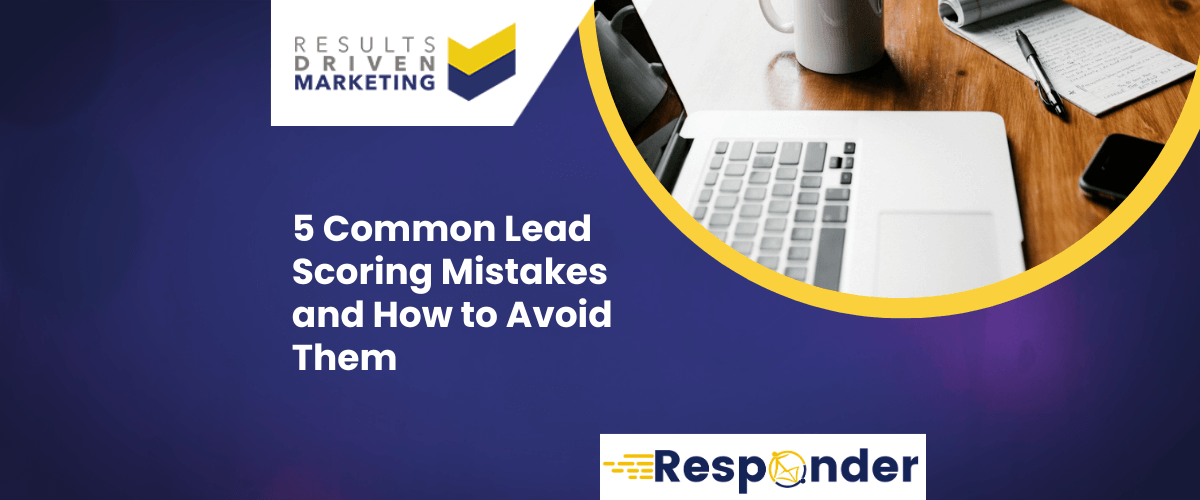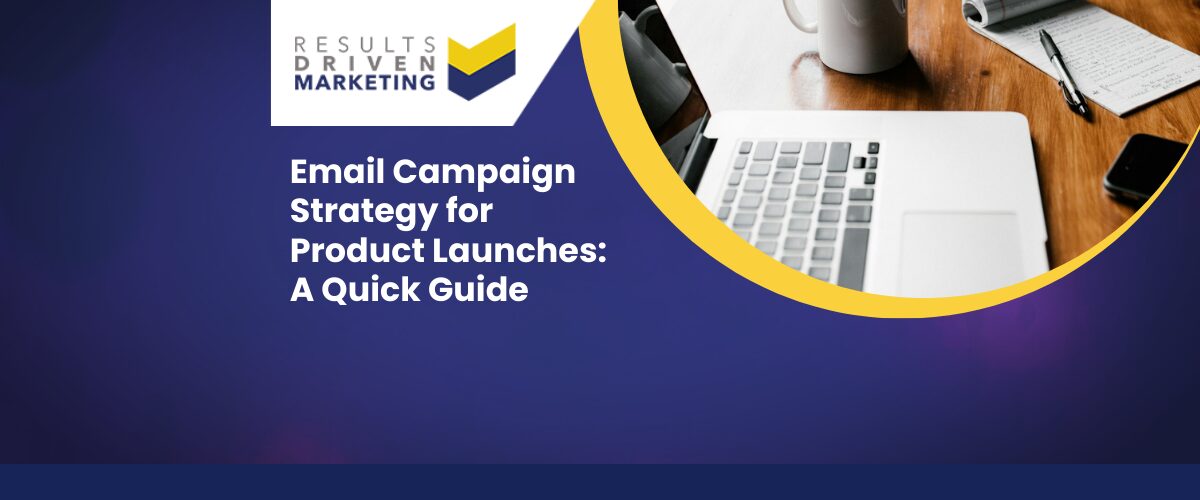
5 Common Lead Scoring Mistakes and How to Avoid Them
Lead scoring has become essential for businesses to quickly pinpoint high-quality prospects. So, what exactly is lead scoring? Put simply, it’s a way to evaluate and prioritise leads by assigning scores based on specific actions and traits.
This process helps marketing and sales teams focus on the leads with the highest potential to convert, moving them efficiently through the funnel.
A well-structured lead scoring model acts as a powerful filter, allowing teams to concentrate on leads most likely to turn into customers—boosting both marketing success and sales outcomes.
However, creating an effective lead scoring model is not without its challenges. Many teams struggle to set up a model that accurately reflects their ideal customer profile or aligns with their sales strategy.
By understanding and addressing these issues, you can create a lead scoring process that not only qualifies leads more accurately but also strengthens collaboration between your sales and marketing teams. Ready to improve your lead scoring strategy? Let’s dive in.
For more effective B2B data solutions, explore our Direct Mail Data, Data Cleansing Services, and International Email Lists at RD Marketing.
Table of contents:
Mistake #1: Overly Complex Scoring Models
One of the biggest mistakes companies make when implementing lead scoring is overcomplicating the scoring model. A complex lead scoring model might look sophisticated on the surface, but in reality, it can become a nightmare for both marketing and sales teams to navigate.
When a model includes too many scoring variables, it becomes harder for team members to interpret, and even more difficult to adjust as business goals evolve. In some cases, complex scoring can confuse more than it clarifies, resulting in misaligned sales priorities and missed conversion opportunities.
At its core, lead scoring should be straightforward and intuitive. By focusing on simplicity, businesses can streamline processes and improve alignment between departments.
This alignment is key, as marketing and sales must work together smoothly to capitalise on high-quality leads. Models overloaded with unnecessary data points often create noise, burying the most relevant indicators that actually drive lead qualification and conversion.
Hence….
Solution: Streamlining your lead scoring model is all about prioritising essential data points:
- Engagement Level: Track meaningful interactions, such as content downloads, webinar attendance, or site visits. These engagement metrics provide a clear picture of the lead’s interest in your brand.
- Firmographic Data: Focus on key identifiers like company size, industry, and geographic location to ensure leads align with your ideal customer profile. Using robust B2B Data can help build this foundation.
- Buying Intent: Consider signals of purchasing intent, such as pages visited on your site or the frequency of communication. Buying intent helps predict when a lead might be ready to move down the funnel.
Instead of trying to include every possible variable, stick to data that truly indicates lead quality. If you’re looking for more refined scoring models or data to support this approach, consider Data Enrichment Services and Email Marketing Management Services from RD Marketing.
These services provide the insights needed to keep lead scoring relevant and easy to manage, allowing both sales and marketing to stay focused on what matters most: nurturing, lead scoring and converting high-potential leads.
Mistake #2: Focusing Solely on Demographic Data
One of the more common lead scoring pitfalls involves relying too heavily on demographic data. While demographic information—such as job title, industry, and company size—is important for lead qualification, focusing exclusively on these factors can be misleading.
Demographic data only offers a surface-level view of your leads, and it often misses out on critical indicators of purchase intent.
For example, a lead may have the ideal job title or work for a company within your target industry, but if they aren’t engaging with your brand or showing active interest in your offerings, their likelihood to convert remains low.
Behavioral data—like website visits, content downloads, and email engagement—gives a deeper look at how a lead interacts with your brand and whether they’re actively moving toward a buying decision.
Ignoring these behaviors in your lead scoring model could lead to wasted time chasing leads who lack genuine intent.
Hence….
Solution: To build a more accurate lead scoring model, consider a balanced approach that combines demographic and behavioral indicators. Here’s a quick breakdown:
- Demographic Indicators: These remain valuable but should be only one part of the equation. Use demographic filters through B2B Data or specialised Direct Mail Data lists to identify potential fits based on your ideal customer profile.
- Behavioral Indicators: Behavioral metrics like content interactions, webinar registrations, and even email opens or clicks indicate that a lead is interested in your content and is actively researching. High-value behaviors suggest an inclination to buy, which is invaluable in lead scoring.
By integrating both demographics and behaviors, you create a scoring model that truly reflects a lead’s readiness to move further down the funnel.
For additional help in refining your data and model, you may want to explore Data Enrichment Services or our Telemarketing Data to enhance your understanding of both demographics and behaviors.
This combination enables your sales team to focus on lead scoring the high-potential leads who are not only a good fit on paper but are also actively showing interest in your offerings.
Mistake #3: Not Aligning Scoring Criteria with Sales
A critical mistake in lead scoring is failing to align scoring criteria with the needs and priorities of the sales team. When lead scoring models are developed in isolation by the marketing team, they can sometimes emphasise factors that don’t necessarily translate to sales-readiness.
This lack of alignment leads to misqualified leads, where marketing passes on leads that might look promising on paper but lack the key indicators that sales actually values, such as immediate buying interest or decision-making authority.
Without a scoring system that genuinely reflects sales goals, leads passed to sales may either be under-qualified or poorly prioritised, making it challenging for the sales team to close deals efficiently.
Effective lead scoring requires a collaborative approach, where both marketing and sales actively participate in defining what makes a lead high-quality and conversion-ready. hence lead scoring is important.
Hence….
Solution: To ensure the lead scoring model meets sales objectives, regular cross-departmental meetings are essential. These meetings should focus on:
Defining Key Scoring Criteria: Bring both teams together to identify the specific criteria that signal readiness to buy. Use resources like Consumer Data or specialised Telemarketing Data to further refine the lead profiles that both departments value.
Reviewing and Adjusting Models: Periodic reviews allow teams to assess the effectiveness of the scoring model based on actual conversions. Sales feedback is invaluable here, as it can highlight gaps or suggest criteria adjustments that improve lead quality.
Using Enhanced Data Sources: Incorporating Data Cleansing Services and Data Enrichment Services helps ensure that the information used in scoring is accurate and up-to-date, allowing sales to focus on leads that are truly ready for outreach.
By establishing regular communication between sales and marketing, you create a scoring model that is not only optimised for conversion but also responsive to evolving sales goals.
This collaborative approach helps both teams work toward the shared objective of generating qualified leads who are primed to convert, streamlining the sales funnel and enhancing overall efficiency. For a closer look at aligning data with your unique lead scoring needs, explore our B2B Data offerings at RD Marketing.
Mistake #4: Ignoring Lead Decay
Another often-overlooked aspect of lead scoring is lead decay—the natural decline in a lead’s interest or relevance over time.
Not all leads maintain the same level of engagement indefinitely. Some may initially seem highly interested, but without timely follow-up or a compelling offer, their engagement wanes.
If your lead scoring model doesn’t account for this fading interest, you may end up focusing on leads that are unlikely to convert, simply because they once showed interest.
Lead decay represents the gradual loss of interest a lead experiences. Leads who haven’t interacted with your brand in weeks or months, for instance, may need their scores reduced to reflect this decline.
Ignoring lead decay skews the accuracy of your scoring model, causing sales teams to chase leads that are less likely to close, thus wasting valuable time and resources.
Hence….
Solution: Implementing a decay score or “lead aging” mechanism can help keep your scoring model relevant and accurate. Here’s how:
Set Activity Thresholds: Determine timeframes for engagement and define when a lead score should start to decay. For instance, if a lead hasn’t opened an email or visited your website within a set period, the score should decrease.
Automate Lead Scoring Adjustments: Use tools like Email Marketing Management Services to track engagement metrics and automate adjustments to lead scores based on inactivity.
Regularly Refresh Data: Keeping data current is essential. Use Data Cleansing Services or CTPS Checker to ensure your lead database reflects the latest information, allowing you to track accurate lead activity.
By acknowledging and adapting to lead decay, your team can focus on active, engaged leads who are more likely to convert.
It’s a proactive way to enhance lead scoring accuracy, ensuring your resources are concentrated on leads that remain responsive and interested. For more strategies on maintaining accurate, actionable data, explore our Email Address List Data and International Email Lists at RD Marketing.
Mistake #5: Not Reviewing and Updating Scoring Criteria Regularly
In the ever-evolving world of B2B marketing, sticking with a static lead scoring model can quickly lead to outdated insights. Markets shift, customer behaviors change, and even your business objectives may adapt over time.
If your lead scoring criteria aren’t adjusted to reflect these changes, you risk overlooking valuable leads or overvaluing others who no longer fit your ideal profile.
A lead scoring model that isn’t periodically reviewed can become disconnected from current trends, making it challenging to qualify leads accurately.
For example, if a certain behavior was a strong buying signal a year ago, but now reflects only casual interest, continuing to assign high scores based on that behavior will result in skewed prioritisation.
Similarly, as your sales goals shift, the types of leads you want to prioritise may change. Failing to update your lead scoring criteria means potentially misaligned efforts and missed opportunities for high-quality leads.
Hence….
Solution: Regular audits of your lead scoring model are essential to keep it relevant and aligned with business objectives. Here’s a step-by-step approach:
Conduct Quarterly or Bi-Annual Reviews: Review your lead scoring criteria at least once every three to six months to ensure it reflects current business goals and market trends.
Gather Feedback from Sales and Marketing: Direct input from both sales and marketing teams is invaluable in refining your model. Teams may identify emerging patterns or behaviors that indicate strong buying intent, which can be used to adjust scores accordingly.
Utilise Fresh Data Sources: Leveraging up-to-date data can make reviews more precise. Services like Data Enrichment and Data Cleansing Services can ensure that your model is backed by accurate, current data, providing the best foundation for making informed adjustments.
By establishing a regular review cycle for your lead scoring model, you can stay agile, allowing your scoring system to adapt to shifts in market behavior and business goals.
This approach keeps your lead prioritisation relevant, helping both sales and marketing focus on leads that genuinely align with your evolving targets. For more insights on refining and updating your scoring models, explore our offerings, including Telemarketing Data and Consumer Data at RD Marketing.
Build a simple lead scoring model (ready-to-use template)
You don’t need a PhD or a 40-rule matrix. Start with a clean, 100-point lead scoring model you can calibrate over time.
The 100-point model
-
Fit (max 40) — Do they look like your ICP?
-
Engagement (max 40) — Are they interacting with you?
-
Intent (max 15) — Are there buying signals?
-
Timing (max 5) — Is now a realistic window?
Score = Fit + Engagement + Intent + Timing − Penalties − Decay
1) Fit (max 40)
Assign points based on firmographic and role fit.
-
Industry/SIC match: +10 (core), +5 (adjacent), 0 (off-target)
-
Company size/headcount: +10 (ideal band), +5 (near), 0 (out)
-
Geography: +5 (served), 0 (not served)
-
Role/seniority: +10 (economic buyer), +5 (influencer), 0 (other)
-
Tech/stack/needs match: +5
Penalties: competitors −20, students/job-seekers −30.
2) Engagement (max 40)
Weight recent, meaningful actions higher.
-
High-value page (pricing/demo) view: +10
-
Case study/guide download: +8
-
Webinar registration/attendance: +10
-
Return visit in 7 days: +6
-
Email click (non-promo): +4; open only: +1 (use cautiously post-privacy changes)
Cap low-value signals so clicks don’t overwhelm true intent.
3) Intent (max 15)
Signals that indicate buying momentum.
-
Demo/quote request or “contact sales”: +15
-
Cart/booking or trial start: +12
-
Pricing PDF download: +8
-
Third-party review site visit (UTM/click-back): +6
4) Timing (max 5)
-
Declared timeline “0–3 months”: +5; “3–6 months”: +3; “>6 months”: +1.
Decay & recency
-
Decay: subtract −10 after 30 days of no activity, −20 after 60 days.
-
Reset: any high-value action (webinar, demo, pricing view) restores recency and removes one decay tier.
Thresholds & routing
-
MQL: ≥60 and at least one Intent signal.
-
Recycle: 30–59 without Intent → continue nurture.
-
Disqualify: <30 or any hard disqualifier (competitor, student, out-of-region).
SLA: Sales to contact MQLs within 4 business hours, two calls + one email day 1, then a 7-day light sequence.
QA & calibration loop (keep it simple)
-
Weekly: spot-check 10 MQLs → were they truly sales-ready?
-
Monthly: compare close/win rate of scored MQLs vs. non-scored.
-
Quarterly: move 5–10 points between Fit/Engagement/Intent based on outcomes; retire the bottom 2 signals, add 1 new signal.
-
Data hygiene: run Data Cleansing monthly; append missing roles/phones with Data Enrichment so Fit & Intent stay accurate.
Example (B2B SaaS buyer)
-
IT Director at 200-person UK firm (Fit +35)
-
Viewed pricing, attended webinar, clicked feature email (Engagement +24)
-
Requested demo (Intent +15)
-
Timeline 0–3 months (Timing +5)
-
No penalties/decay
Total = 35 + 24 + 15 + 5 = 79 → MQL (route to sales).
How Results Driven Marketing can help
-
B2B Data / Direct Mail / Telemarketing Data: fill the funnel with ICP-matched prospects for more reliable lead scoring.
-
Data Cleansing & Enrichment: keep Fit fields accurate and Intent tracking clean.
-
Email Marketing Management: build the nurture sequences that lift scores from 40s → 60s+.
Start simple, measure, and tune. The best lead scoring model is the one your team actually uses—and improves—every month.
Conclusion
In summary, effective lead scoring is about creating a model that is streamlined, relevant, and responsive to the real-world behaviors and needs of your leads.
Avoiding common pitfalls—such as complex scoring, over-reliance on demographics, misaligned sales criteria, ignoring lead decay, and failing to update your scoring regularly—can drastically improve the quality of your leads and drive better conversion rates.
By refining your lead scoring practices, you’re empowering both sales and marketing to focus on the right leads at the right time, making the sales funnel smoother and more efficient.
Regular assessments and collaboration between sales and marketing are essential to keep your lead scoring model sharp and adaptable.
Don’t miss out on the potential to maximise lead quality by letting your scoring practices go stale. Take a closer look at your scoring strategies today and make adjustments that will boost your lead qualification and conversion success.
For more ways to enhance your lead scoring and data strategies, explore our solutions, including Direct Mail Data, International Email Lists, and Data Enrichment Services at RD Marketing.
Who are we?
Thinking about “how do I buy data“?
Providing b2b database solutions is our passion.
Offering a consultancy service prior to purchase, our advisors always aim to supply a database that meets your specific marketing needs, exactly.
We also supply email marketing solutions with our email marketing platform and email automation software.
Results Driven Marketing have the best data of email lists for your networking solutions as well as direct mailing lists & telemarketing data in telemarketing lists
We provide data cleansing and data enrichment services to make sure you get the best data quality.
We provide email marketing lists and an international email list for your business needs.
At RDM We provide b2c data as we have connections with the best b2c data brokers.
A good quality b2b database is the heartbeat of any direct marketing campaign…
It makes sense to ensure you have access to the best!
Call us today on 0191 406 6399 to discuss your specific needs.
Results Driven Marketing
0191 406 6399








